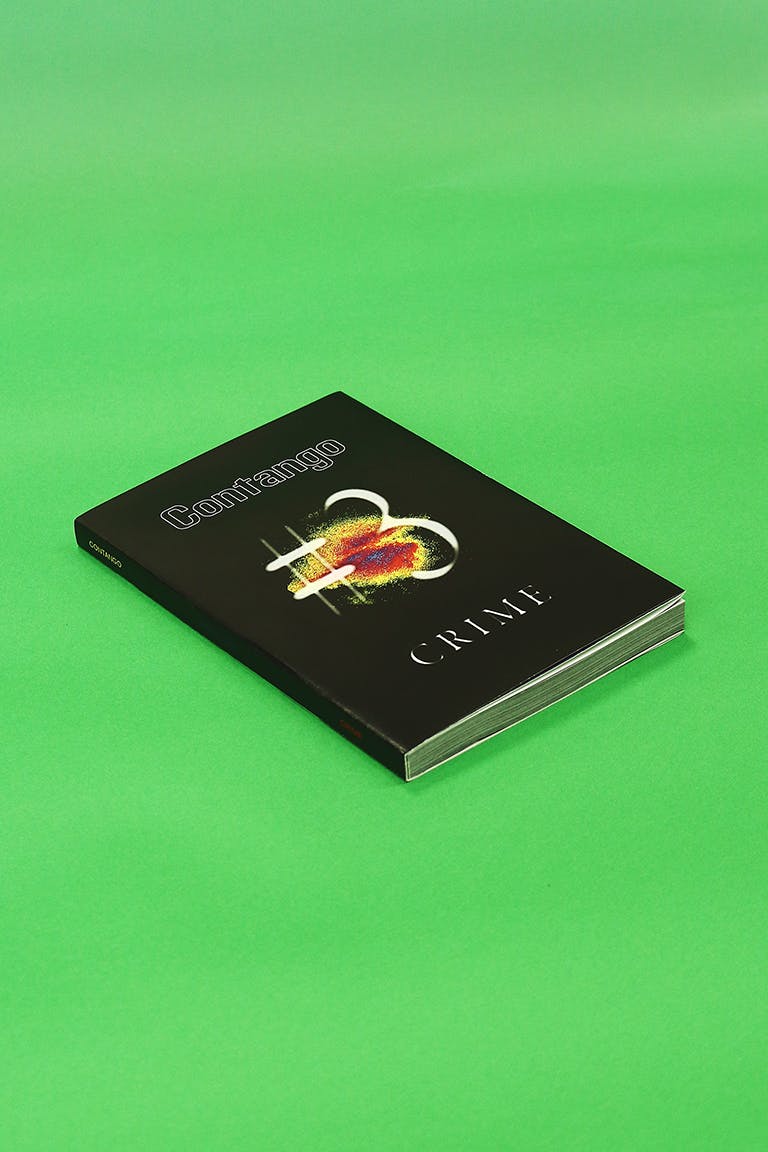CRIME
What determines a criminal? The U.S. functions on an adversarial system of justice. Ideally, within this system cases are brought before a neutral party that is meant to determine innocence or guilt based on written and oral arguments, evidence, and testimony. However, our system is fraught with prejudice, racism, and oppression.
Theft, arson, assault, extortion, prostitution, fraud, battery, and murder; the taxonomy of crime reduces our understanding of wrongdoing to discrete actions. Some of which, depending on the perpetrator, result in fatal consequences. Whether a jury is evaluating a defendant’s guilt, a police officer judging the potentially violent intent of a citizen, or a social body determining the virtue of a person in power, identifying a criminal requires an array of problem solving tactics.
The law neglects those living on the margins of society, so how can we expect the current methodological pursuit of justice to uphold its manifest function, “...justice for all”? For our third issue, Contango presents contributions that explore where crime falls in and out of the law.
Writers
Justifying Punishment: Retributivism, Utilitarianism, and Social Cohesion
Alexandra Drexelius is an archivist and bookshop assistant at the Graham Foundation for Advanced Studies in the Fine Arts. She received a B.A. in Art History from the University of Chicago. Her research interests include the intersection between art and politics in the post-war period and the use of taxonomy alongside the formation of art history as an academic discipline. Recently, she curated exhibitions at EXPO Chicago and the Corvus Gallery at the University of Chicago.
M.W. Cronin is a law student living in Chicago, Illinois.
The Twenty-Fourth March of Donald John
Chandler James is a PhD student in Political Science at the University of Chicago. Chandler researches and writes about the presidency, public opinion, and populism. Prior to graduate school, Chandler worked as a congressional staffer.
Permission to Appear: Trans Optics and the Law in Three Scenes
Jameson Paige is a writer and curator based in Chicago.
Emerge: A Solar Lantern Pilot Project With Homeless Youth in Los Angeles
Jacqueline (aka Jae) Kim is a multi-disciplinary artist, whose projects have included narrative film, environmental installations of site & sound, and a developing social practice. Since moving to Los Angeles 25 years ago, she has taken a specific interest in life lived in public, stemming from a childhood love of being outside and her family’s migrations from Korea to Michigan and New York. She wrote this article on a DIY residency sponsored through GoFundMe and would like to thank Rachel, Lucas, Meredith and the amazing community at SPY.
United States V. Lane No. 09-1057
Johnny William Lane is the oldest of four boys. He grew up on the southside of Chicago. He played baseball at Fenger High School and joined the Marine Corps right after he graduated. What he cares about is his family, community and the future of our youth.
Culpability and Computer Vision: Machine Vision as a Regime of Truth Complicit in the Murder of Stephon Clark
Austin Watanabe is a Master of Architecture candidate at the University of Minnesota and a designer at Alchemy Architects. He is also the co-founder of Interesting Tactics, a utopic spatial practice based in Minneapolis, MN. Austin’s work has been published in the Environmental Design-Research Association, the Journal of Child and Adolescent Psychopharmacology, the Man-Environment Research Association, and the International Conference on Robotics and Automation.
This essay was informed by Architecting Anthropoveillance, a graduate course instructed by Vahan Misakyan.
ARTISTS
David Ibata is an American painter from the Washington DC metropolitan area. He received his education from the Corcoran College of Art & Design (BFA, 2008) followed by the New York Academy of Art (MFA, 2010), and has been a copyist at the National Gallery of Art since 2012.
Tirtza Even is a practicing documentary-maker and video artist, and has produced both linear and interactive video work that has been shown at the Museum of Modern Art, NY, at the Whitney Biennial, the Johannesburg Biennial, as well as in many galleries, museums and festivals in the U.S., Israel and Europe, including the Museum of Modern Art’s Doc Fortnight, Rotterdam Film Festival, San Francisco Film Festival, New York Video Festival, Lincoln Center. It has won numerous grants and awards, including 3ARTs Visual Arts Award, Fledgling Distribution Fund, Artadia Awards, Chicago (winner of top award); Golden Gate Awards Certificate-of-Merit, San Francisco International Film Festival; Media Arts Award, The Jerome Foundation; Individual Artists Program Awards, NYSCA, and many others; and has been purchased for the permanent collection of the Museum of Modern Art (NY), the Jewish Museum (NY), the Israel Museum (Jerusalem), among others. Even has been an invited guest and featured speaker at many conferences and university programs, including the Whitney Museum Seminar series, the Digital Flaherty Seminar, SXSW Interactive Conference, Art Pace annual panel, ACM Multimedia, the Performance Studies International conference (PSI), the Society for Literature, Science, and the Arts conference (SLSA) and others. Her work is distributed by Heure Exquise, France, Video Data Bank (VDB) and Groupe Intervention Video (GIV), Canada. Even is currently an Associate Professor at the School of the Art Institute of Chicago’s Film, Video, New Media, and Animation department.
Spencer Elias was born in San Francisco in 1987. He graduated from the University of Oregon in 2011 before receiving his MFA from The School of the Art Institute of Chicago in 2014. Elias has exhibited in the US and abroad including the Elmhurst Art Museum, The Harvard Film Archive, Ambit Magazine (UK), and other publications. In 2014 Elias was awarded the Clare Rosen and Samuel Edes Foundation Prize for Emerging Artists. Elias currently lives and works in Oakland, CA.
INFORMATION
Spring 2019—Issue 3
6.75x4.5 inches
150 pages
4-color with slipcover
